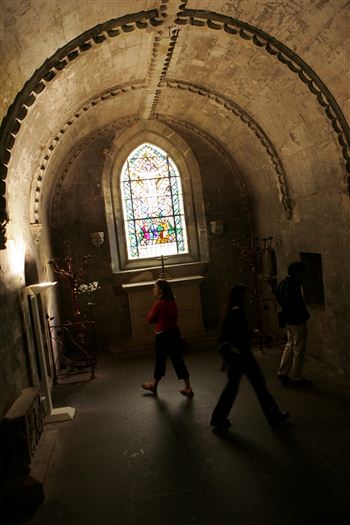HE famously cracked one of movie history’s most famous mysteries in its medieval crypt.
But now Hollywood legend Tom Hanks has put up a chunk of his own fortune to help to renovate the 15th-century Rosslyn Chapel.
The star was on set at the Midlothian landmark for the blockbuster hit The Da Vinci Code, where crews filmed for a week in 2005.
In message to the staff at the chapel, which is currently being renovated, Hanks described his time there as “delightful”, adding that it was “all one could imagine or hope for”.
The 53-year-old said: “My fondness for dear Rosslyn Chapel, that dear little place of history.
“Few locations in film are so delightful and few destinations live up to their billing, but Rosslyn was all one could imagine or hope for.
Generous
Staff at the chapel could not reveal how much the Oscar-winning actor has donated, but said it is large enough to see the project finished sooner than planned.
Colin Glynne-Percy, director of the Rosslyn Chapel Trust, said: “Tom Hanks has given us generous support and there have been very generous donations from the US.
“We are hugely touched by the level of interest and support we have had.
“It has boosted our revenue. We’ve been able to speed up the project and we’ll be able to finish it quicker.
“Let’s just say the success from the Da Vinci Code came at a very opportune moment.
“We were seeing 40,000 visitors a year before the book was written.
Poor condition
“We had no way of knowing how much that book would affect us.
“After it came out I think it went up to 80,000, but when the film version came out it really took off.
“Now were seeing 175,000 visitors per year.”
When director Ron Howard and his crew arrived at Rosslyn they found the church in a poor condition and had to use a model to film at least one of the scenes.
Since the success of the film Rosslyn has received donations from around the world, and is now undergoing a £8.6million renovation.
Rosslyn Chapel was built by William St Clair, 3rd Prince of Orkney, for his family, with work beginning in 1446.
The site was originally a Catholic church, but was closed to the public after the Reformation in 1560, for around 300 years.
In 1842 Queen Victoria visited the chapel saying that it should be ‘preserved for the country’.
The chapel is said to have hidden Masonic and Templar symbols, with rumours persisting that the Sinclair family are direct blood relatives of Jesus Christ.

